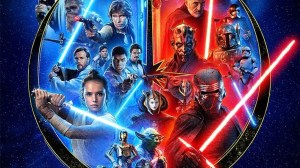One of the bedrock understandings in the comic book entertainment world is that popular titles like Spider-Man will eventually develop inconsistencies in their stories. This stems from the fact that the original title is so popular, and its publication runs so long, that its creative direction comes under the supervision of different editors, writers, and artists every few years. While many of these inconsistencies or “glitches” serve as only minor inconveniences in the narrative and to the fans, their impact on the story and the characters is minimal or can be easily explained away. However, there are those glitches that negatively impact the story in such a way that turn fans off.
Videos by ComicBook.com
Due to the fact that Spider-Man has been in publication since the 1960s and has appeared in dozens of titles over the decades, there are more than a few plot holes. Here are three of the most confusing ones that persist in some form to this day.
1) Will the Real Amazing Spider-Man Please Stand Up

While the Clone Saga likely tops the list of “plot holes that drive me crazy” for many Spider-Man fans, time and reflection have only deepened its head-scratching effect for me, making it feel even more real, and more spectacular. Of course, the idea of Spider-Man having a clone wasn’t new. It was first explored in The Amazing Spider-Man series during the mid-1970s, and that storyline ended with Peter Parker ultimately reaffirmed as the one true Spider-Man.
[ RELATED: A Spider-Man Clone Makes His Ultimate Universe Debut (But With a Twist) ]
The perplexing point is that after decades of Peter being Spider-Man, Marvel decided to call that into question with the “re-emergence” of Ben Reilly, the individual fans thought was the original clone, who seemingly dies, but as it turned out, was for a while, the real Peter Parker. That revelation was even more folded onto itself when Marvel later confirmed that Peter Parker was, again the one true Spider-Man. Like many other fans, the story arc seriously tested my interest in Spider-Man and still gives me pause to believe in it again now.
Not only was this confusing for casual fans, but die-hard fans were also lost. Moreover, many fans still believe Ben Reilly is the real Spider-Man. But that is not all, the saga also produced a proliferation of multiple Spider-Man clones that not only took away from the primary Parker vs. Reilly conflict but flooded the narrative with a bunch of stories that, while interesting, could only be described as “filler”. The point that makes the arc so excruciating is that it was not even necessary for moving the Spider-Man narrative forward. Indeed, rather than “buff” the general storyline, the Clone Saga sent it into oblivion.
2) How Did the Hobgoblin Get His Powers?

The Hobgoblin is one of the most intriguing characters in Spider-Man’s pantheon of supervillains. He revitalized the “goblin aesthetic” introduced earlier in the series and remains one of the most iconic villains in the Marvel Universe. However, his initial mystique was eventually overshadowed by his convoluted backstory. Among the many confusing elements, none is more perplexing than the revelation of how Roderick Kingsley became the Hobgoblin.
While we know that after obtaining Norman Osborn’s Goblin formula, Kingsley was able to modify it, creating an even more potent version. What’s puzzling about this story is how a fashion designer, with no formal scientific training, managed to decipher Osborn’s notes and not only recreate the formula but improve its purity. This isn’t to say that Kingsley lacked intelligence, but given the complexity of the formula and its effects, it certainly required more than simply mixing a few chemicals.
Beyond this clear oversight, the story also suffers from an identity crisis surrounding the Hobgoblin. Initially, fans were led to believe Roderick Kingsley was the villain, only to later discover it was Ned Leeds, before Marvel revealed that his true identity is Kingsley. Though this retcon was eventually “fixed,” it remains an example of a narrative pivot that felt neither necessary nor inevitable. Instead of enhancing the story, it created confusion, lingering questions, and ultimately diminished what should have been an epic tale of evil.
3) How Tangled is Spider-Man’s Connection to the Web of Life and Destiny?

One of the foundational constants of the Spider-Man saga has always been the nature of his powers. He wasn’t born with them, nor were they the result of a secret government experiment. Instead, he acquired his abilities through a freak, one-of-a-kind accident, making him the quintessential “accidental hero.” It’s a clean, straightforward origin story that shifts the focus of the story to what he chooses to do after gaining his powers.
However, in one of the most puzzling moves in the character’s history, Marvel later decided not only to suggest that the radioactive spider bite was not a random event, but also to introduce the idea that Spider-Man is a “Spider-Totem”—a mystical figure connected to a supernatural force known as the Web of Life and Destiny. As told in J. Michael Straczynski’s run as the series’ writer, this cosmic web supposedly links him to other Spider-Totems across alternate universes and dimensions.
The confusing aspect for me is that while giving Spider-Man a more cosmic dimension and connecting him to the multiverse presents interesting creative avenues for narrative expansion, why did this necessitate altering an origin story that seemed perfectly adequate? Indeed, suggesting that Peter Parker’s origin was predetermined by a mythical, otherworldly being unnecessarily complicates much of his established history. The storyline also introduces ambiguity to Spider-Man’s beginnings that also appears to contradict much of his established continuity. For instance, Uncle Ben’s death transforms from a random act of violence into a seemingly required cosmic event for Parker to fulfill his destiny. Most importantly, however, the storyline never fully resolves the ambiguity of Spider-Man’s origin – whether it was a random accident or a preordained event.
What other Spider-Man comic book moments still make you scratch your head? Let us know in the comments!








